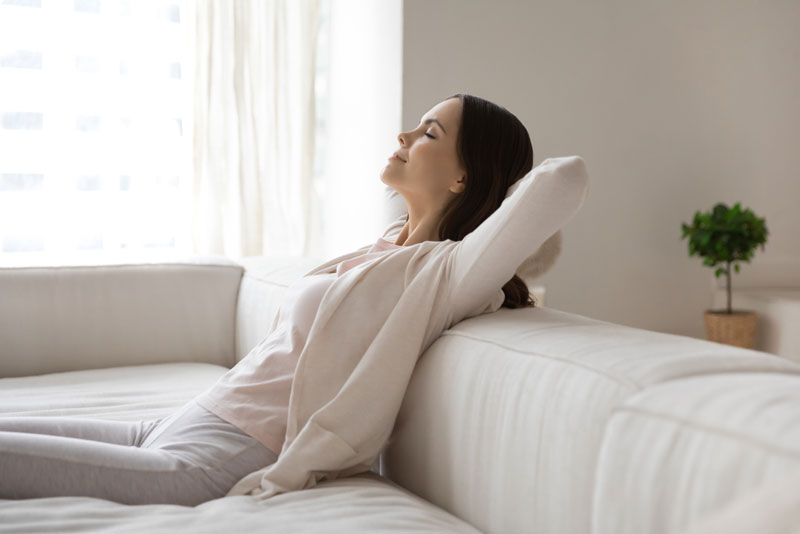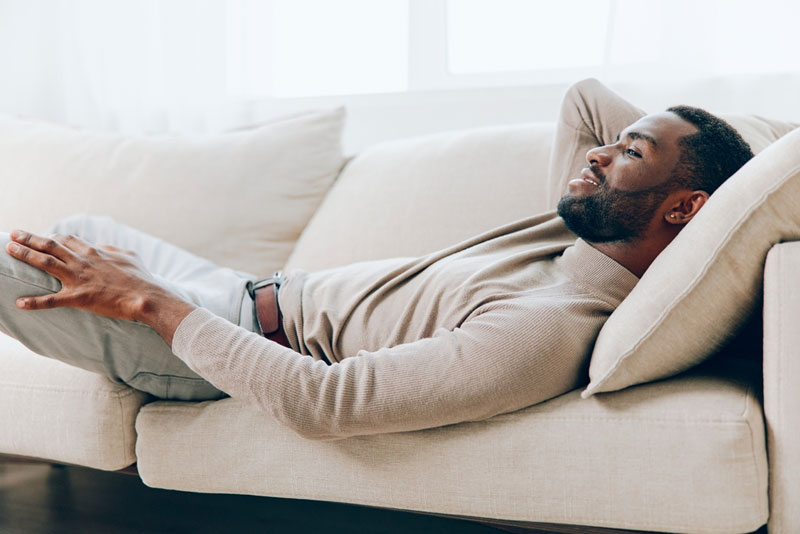Imagine awakening, not on the plush softness of springs and foam but on the solid, unyielding floor. It sounds bizarre, maybe even a tad uncomfortable. But did you know that a surprising number of people worldwide forgo the traditional mattress and opt to sleep on the floor?
Many individuals worldwide prefer sleeping on the floor due to cultural practices, personal choice, space, and budget constraints. While this unconventional approach to sleep has garnered interest, the question remains: Is it good for you? Today’s blog explores the potential benefits and drawbacks of sleeping on the floor, shedding light on what you should know before making this choice.
Is It Good To Lay On The Floor?
Sleeping on the floor might be unsafe for everyone, especially for older adults and those with health issues, trouble moving around, or allergies. If you’re in these groups, it’s a good idea to talk to your doctor before trying it.
As we age, we might feel colder easily, and our bones may not be as strong. Older adults might have arthritis or find it hard to move around, which makes sleeping on the floor risky. It can make them feel even colder or increase the chance of getting hurt. Some people have health problems that make them more sensitive to the cold, like anemia or diabetes. Sleeping on the floor can make them feel even colder.
If you find it hard to sit down and stand up, especially from the floor, it’s better to sleep on a bed or a raised bed. Getting in and out of a higher bed is easier for people with trouble moving around than using a mattress on the floor. Trying to stand up from the floor can also increase the risk of back pain.
Discover the Benefits Of Floor Sleeping
Ground-level sleeping, an unconventional choice for some, can offer intriguing advantages. Dive into the benefits of floor sleeping, from cooler slumbers to potential back pain relief and improved posture.
Cooling Comfort

When the mercury soars and sweat-soaked sheets become the norm, sleeping on the floor good presents a compelling solution. Being closer to the cool ground means rapid body heat dissipation, ensuring a more comfortable rem sleep, especially during sweltering summer nights.
Back Pain Bliss

For those seeking respite from back pain, floor sleeping may provide the answer. A firmer surface, akin to the floor, can align the spine more effectively than overly soft mattresses. Pregnant individuals and those experiencing back pain, in particular, might discover comfort in this unconventional choice.
The Path to Alignment

Poor posture can be a silent tormentor, contributing to various woes. Sleeping on the floor simplifies the quest for good posture during slumber. Without the risk of sinking into a mattress, maintaining spine alignment becomes more manageable. A well-placed thin pillow can further reduce pressure, fostering the best sleeping direction and a posture-friendly environment.
A Breath of Fresh Air

Beyond temperature control, a cooler sleep environment often improves sleep quality. Floor sleeping aligns with this principle, allowing for cooler slumber that encourages restorative rest. A comfortably cool bedroom is conducive to an undisturbed night’s sleep and a positive affirmation for anxiety.
Downside Of Floor Sleeping

While many embrace the idea of sleeping close to the earth, it’s crucial to consider the potential downsides:
Amplified Back Pain
Not all back pain can be fixed by lying on the floor. Sometimes, the floor’s hard surface can make certain pressure points around the hips and shoulders even more uncomfortable. To help with back pain, eating a healthy diet with probiotics and prebiotics is important to promote good gut health.
Seasonal Shifts in Temperature
What offers respite in summercool floor surfacescan turn into a drawback during colder months. As heat naturally rises, floor sleeping can leave some feeling too chilly when temperatures drop.
Rising Allergen Exposure
Bedrooms harbor a range of potential allergens, from dust mites to dust, mold, and bugs, making it essential to use insect repellent from a reputed brand like Medella Springs. Opting for floor sleeping may heighten your exposure to these irritants, potentially disrupting your sleep quality and triggering allergies.
Tips for a Comfortable Night’s Sleep on the Floor
- Choose the Right Surface: Opt for a clean, flat, firm surface. Avoid uneven or hard floors that could cause discomfort.
- Use a Mattress or Padding: Place a thin mattress, yoga mat, or cushioning beneath your sleeping bag or bedding to provide extra comfort and insulation.
- Pillow Placement: The most common question in today’s youth is whether it is good to sleep without a pillow. However, using pillows strategically to support your head and neck is essential. Experiment with different pillow sizes and thicknesses to find what suits you best.
- Sleeping Position: Adapt your sleeping position to the floor. Side sleepers may find it more comfortable with a pillow between their knees, while back sleepers can benefit from a pillow under their knees or lower back.
- Maintain Good Posture: Focus on keeping your spine aligned while you sleep. Proper alignment can reduce discomfort and improve sleep quality.
- Keep It Clean: Clean the sleeping area regularly to remove dust and allergens. Wash your bedding and mattress pad regularly to maintain hygiene.
- Layer Up: Customize your sleeping surface by layering blankets or quilts for added cushioning and warmth.
- Temperature Control: Pay attention to room temperature. Floor sleeping can feel colder, so use extra blankets or adjust the thermostat accordingly.
- Trial Runs: Transitioning to floor sleeping may take time. Start with short naps or occasional nights on the floor to get used to the experience.
- Listen to Your Body: If floor sleeping doesn’t provide the comfort you need, don’t hesitate to switch back to a traditional bed. Sleep quality is essential for overall well-being.
Conclusion
Whether it’s good to lie on the floor depends on various factors, including personal preference, health considerations, and comfort levels. While some individuals may find it beneficial, others may not experience the same advantages or discomforts. Listening to your body and making choices that align with your needs and well-being is essential.
Frequently Asked Questions
Are there cultural or historical practices that favor the benefits of floor sleeping?
Yes, cultural and historical practices favor sleeping on the floor. For example, in Japan, the traditional practice of “futon” involves sleeping on a thin mattress placed directly on the floor. This is believed to promote better alignment of the spine and improve circulation.
What types of surfaces are best for sleeping on the floor?
Firms and flat surfaces, such as a yoga mat or a Japanese futon, are best for sleeping on the floor. These surfaces provide better support to your spine and help maintain proper alignment during sleep.

